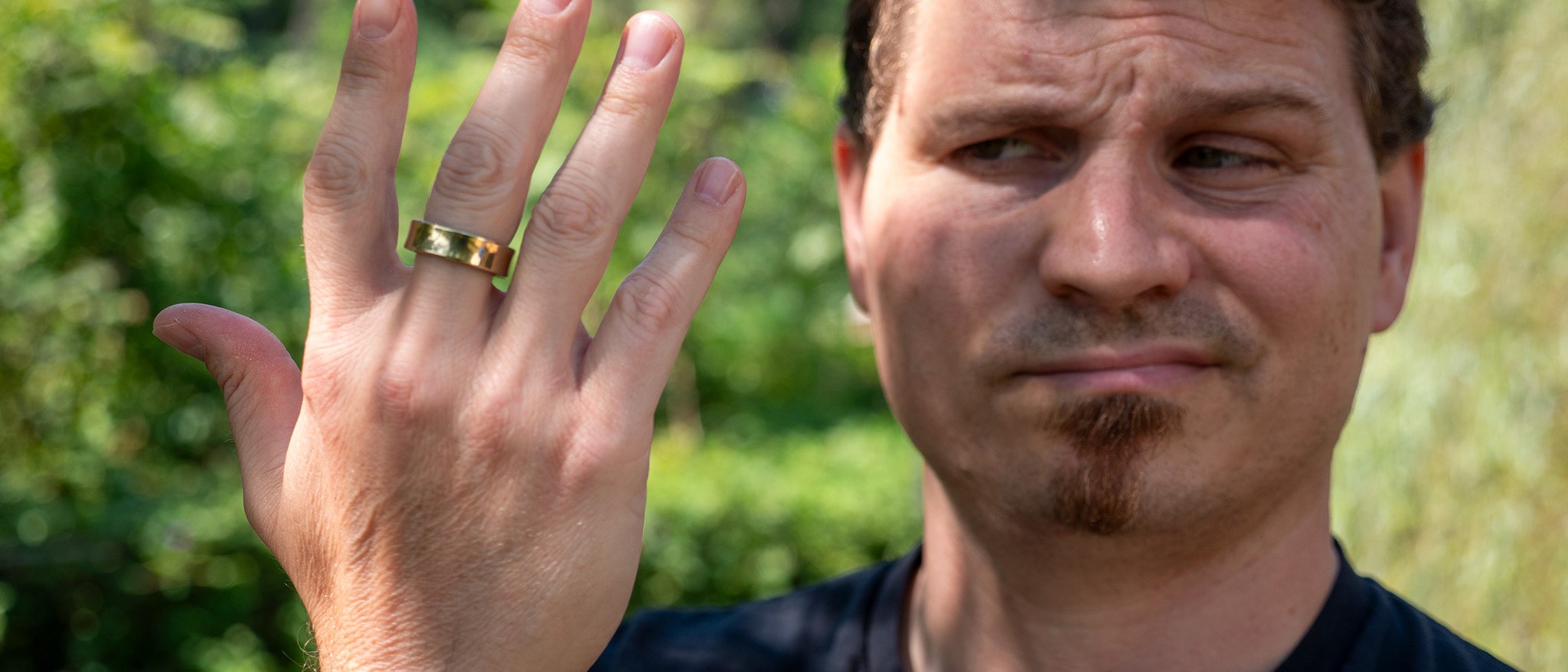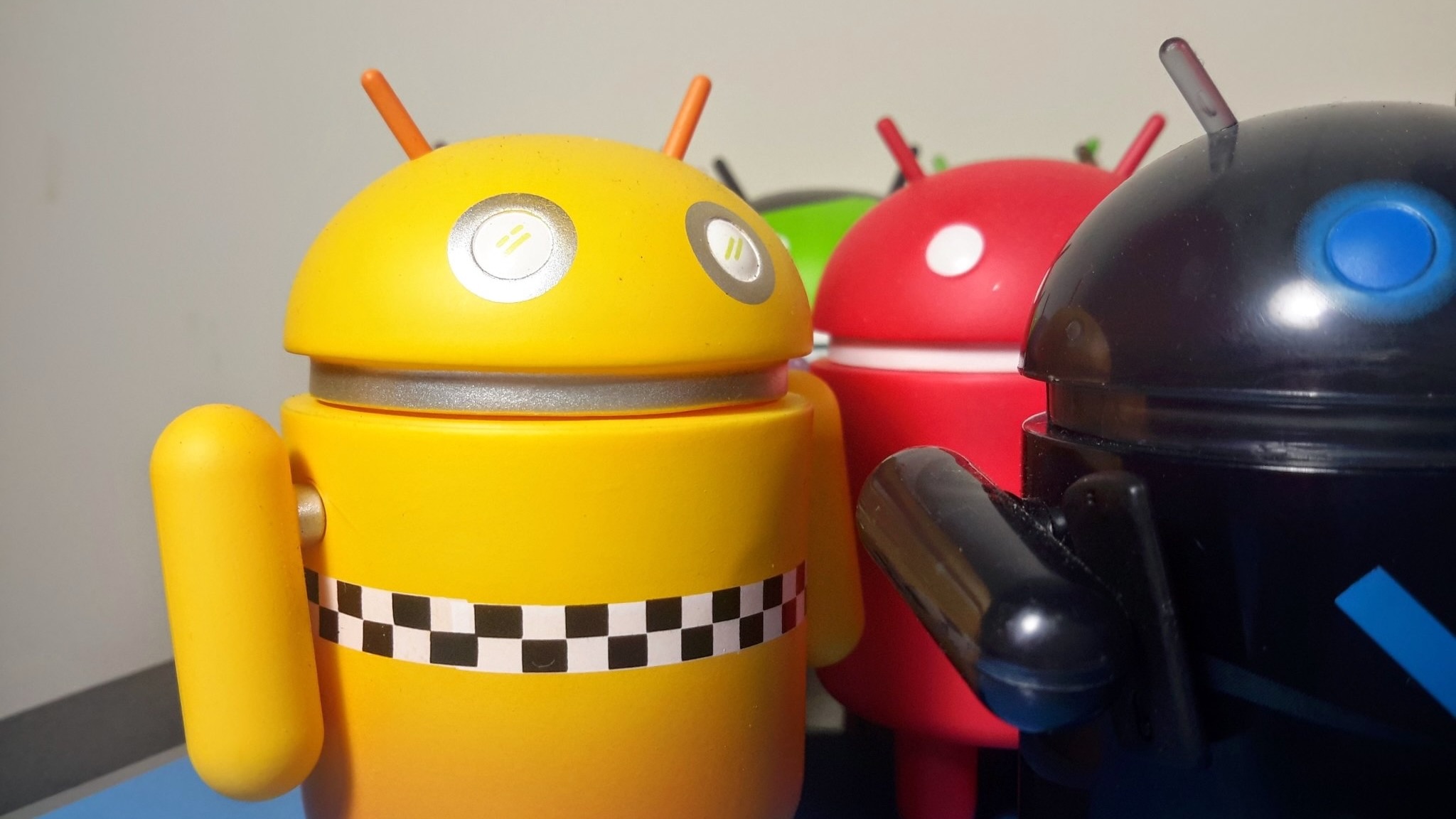Android Central Verdict
Smart rings have been around for years, yet Samsung's late-to-the-party Galaxy Ring flounders in some unfortunate key areas. While the hardware design is excellent, it's comfortable to wear all day and night, and the battery life lasts a week, sleep and health tracking data is a hit or miss. It's also very limited in fitness tracking, and some features work only if you have the right Samsung phone.
Pros
- +
Week-long battery life
- +
Stylish aesthetic
- +
Light and comfortable
- +
Automatic walking and running tracking
- +
Automatic sleep tracking
- +
Lots of visible health data
Cons
- -
More expensive than a smartwatch
- -
Very limited fitness tracking capabilities
- -
Mediocre sleep tracking accuracy
- -
No AFib detection
- -
Gestures are gimmicky and only work on Galaxy phones
- -
Find my device is severely limited on non-Samsung phones
- -
Some insights are limited to Samsung phones with Galaxy AI
Why you can trust Android Central
I've never been a person who enjoys wearing a watch. Even though I've used dozens of smartwatches over the years, I seldom wear one all day long. That's where the idea of a smart ring comes in for me. As someone who already wears a wedding band every day and finds it comfortable, I had hoped a smart ring would feel like the ideal form factor when compared to cumbersome fitness straps or bulky watches.
The Samsung Galaxy Ring is the latest smart ring to try to woo customers with its concept, which started in 2015 with the release of the first-generation Oura Ring. But if you were hoping to replace your smartwatch with the Galaxy Ring, you're going to need to temper your expectations.
The Samsung Galaxy Ring is designed for 24/7 health tracking and little else. It'll automatically track walking, running, and even sleeping, but while Samsung's Health software gives you lots of data, I'm not sure I trust most of it. It lacks AFib detection, something the Ultrahuman Ring Air recently added, making it mostly useless for 24/7 heart rate monitoring. Even the "find my ring" feature only really works on Samsung Galaxy phones, a hugely missed opportunity for Samsung to one-up the competition.
Samsung has a lot of improvements to make but, thankfully, all of them are software-related and could be addressed in the future through updates. Samsung doesn't charge a monthly subscription like Oura, but without any kind of meaningful heart monitoring data and no real support for working out with the ring, I'm not sure what the point of wearing one is.
About this review
I've been using the Galaxy Ring for five weeks as of the publishing of the final review on August 30, 2024. My gold size 10 Galaxy Ring has been paired with a Samsung Galaxy S24 Ultra running One UI 6.1, as well as a number of non-Samsung devices like the OnePlus 12 and CMF Phone 1.
Price and availability
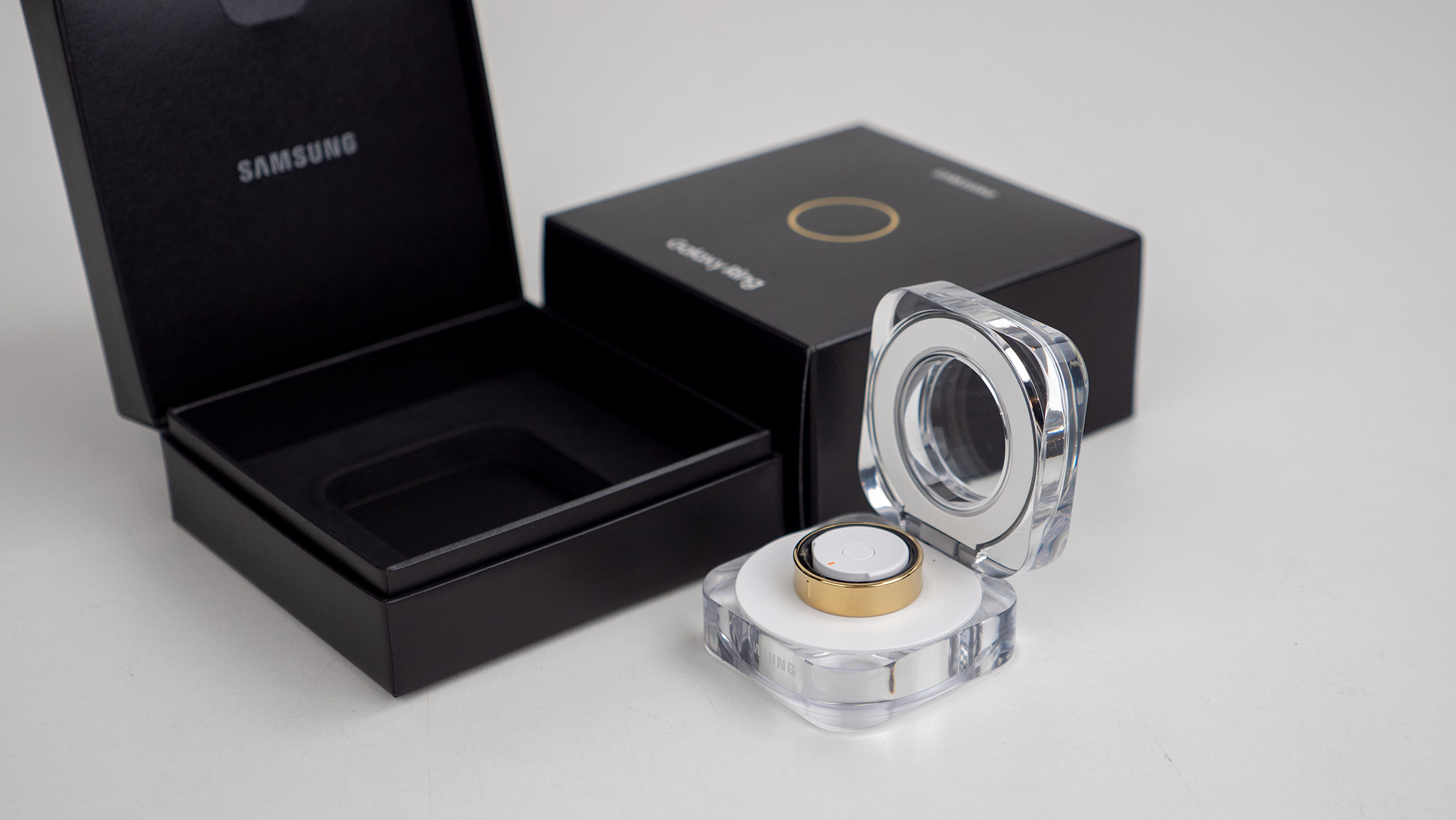
The Samsung Galaxy Ring is available for $399 and comes in three classic ring colors: silver, gold, and black. Initial orders were back ordered due to popularity but Samsung ramped up production substantially to meet demand. The Galaxy Ring currently takes a few weeks to ship out once ordered.
To purchase a Galaxy Ring, you'll first need to spend $10 on a sizing kit. That comes with a $10 credit towards the purchase of a Galaxy Ring, so the sizing kit is effectively free once you buy a Ring. You can also find a sizing kit available at some Best Buy locations for free, so you may want to call around first before ordering a kit. Samsung makes Galaxy Rings in standard ring sizes 5–13.
Unlike its biggest competitor, the Oura Ring Gen 3, the Galaxy Ring doesn't require a monthly subscription to access your data. All that is handled through the Samsung Health app, which works with any Android phone. Samsung Galaxy phones with Galaxy AI built-in, like the Galaxy S24 Ultra, will get extra insights for their data powered by Galaxy AI when paired with the Galaxy Ring. Additionally, you'll only get full ring tracking functionality and ring gestures when paired with a Samsung phone.
Hardware and design
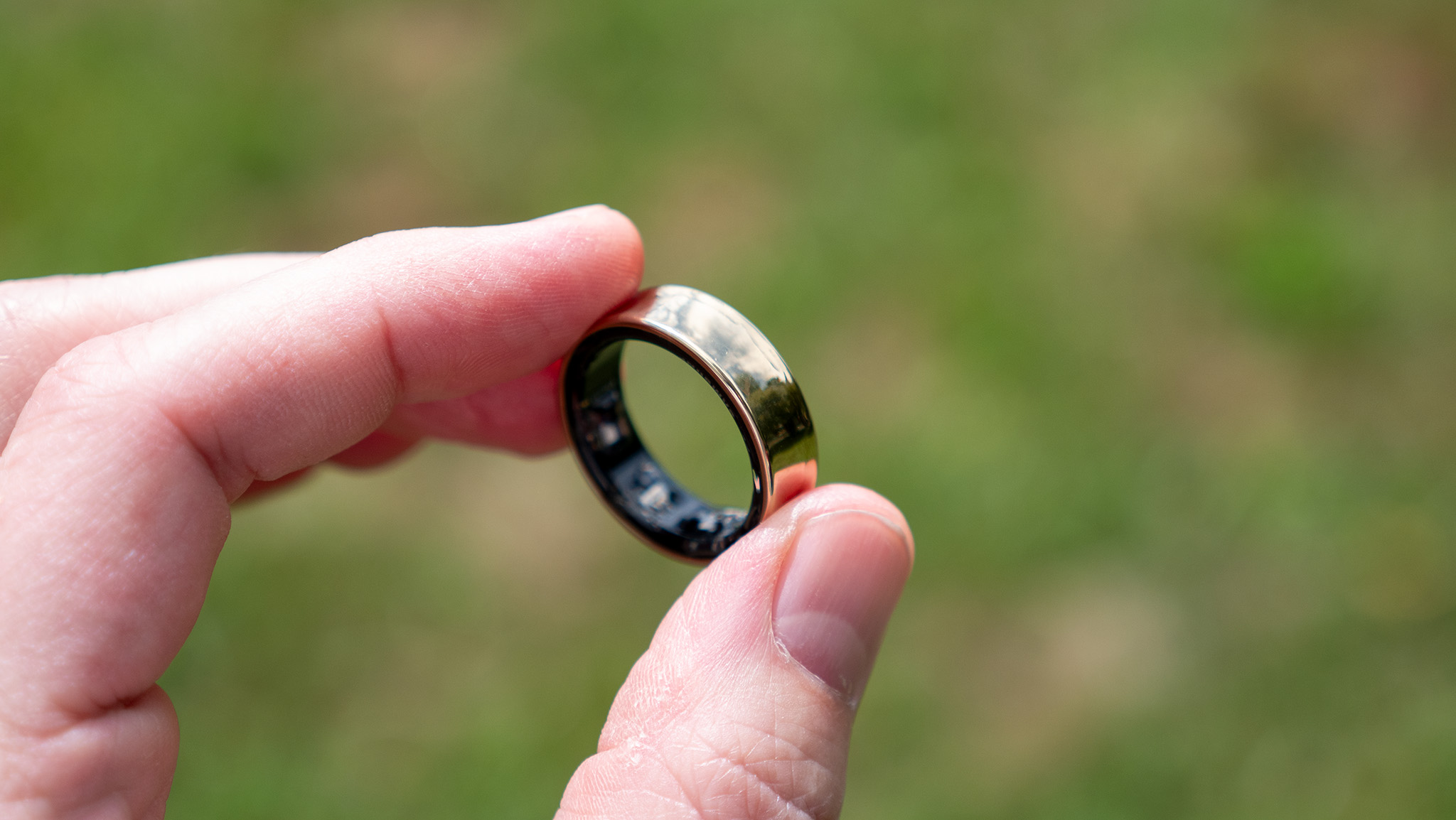
If I could get true feature parity, I'd swap out a smartwatch for a smart ring nearly any day of the week. Except for some kinds of workouts, a smart ring is a significantly more comfortable device to wear 24/7 than a smartwatch.
Samsung's hardware design is largely excellent, stuffing a battery and tons of tech into a svelte ~2.6mm thick ring. This is notably thicker than some standard rings — like my gold wedding band — but it's not so thick as to feel more noticeable on my finger than a standard ring.
On release, Samsung was the thinnest smart ring until the RingConn Gen 2 came out just two weeks later. Unlike that ring, though, the Galaxy Ring is a perfect circle, while RingConn opted for a more unique squircle design.
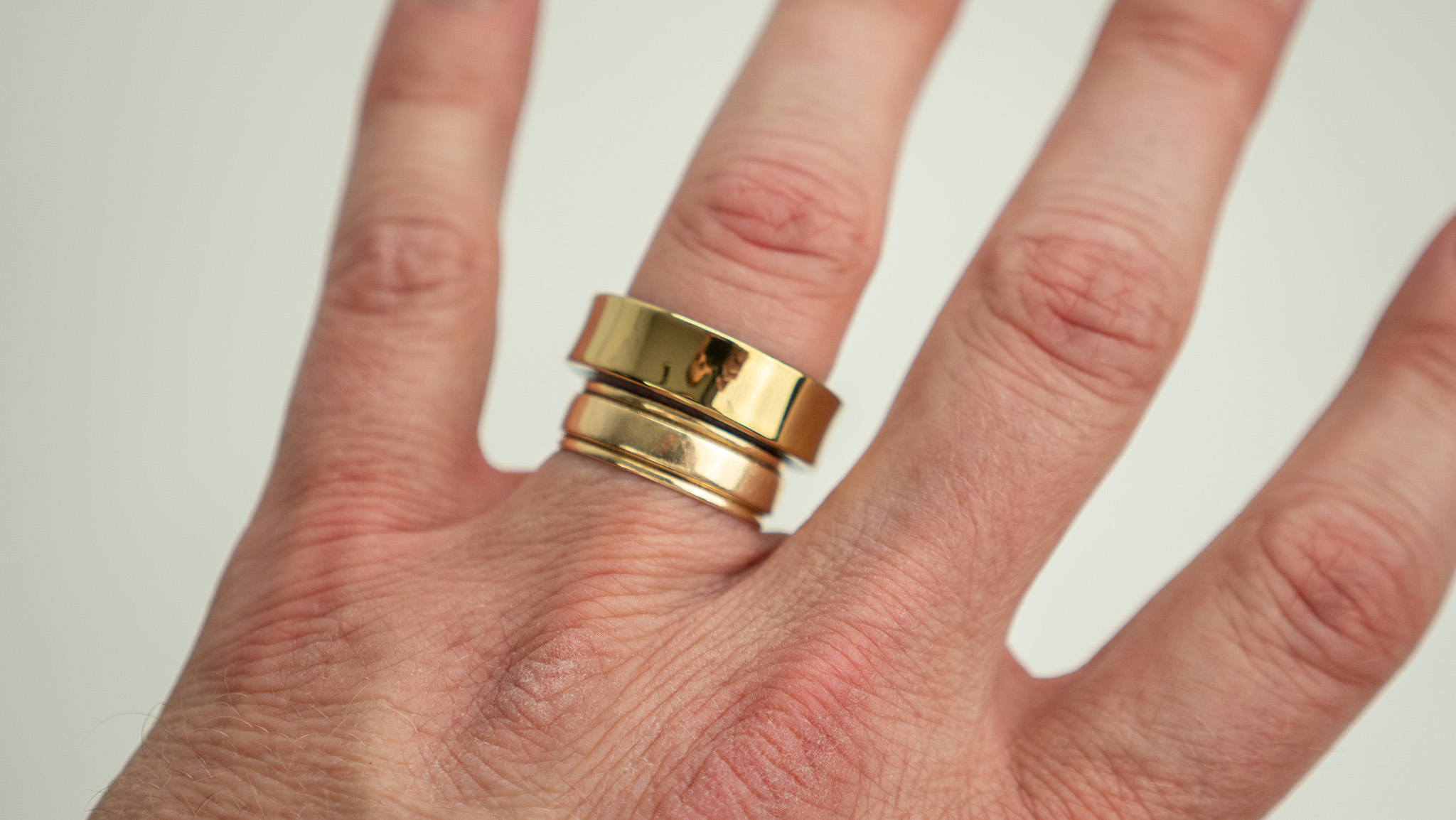


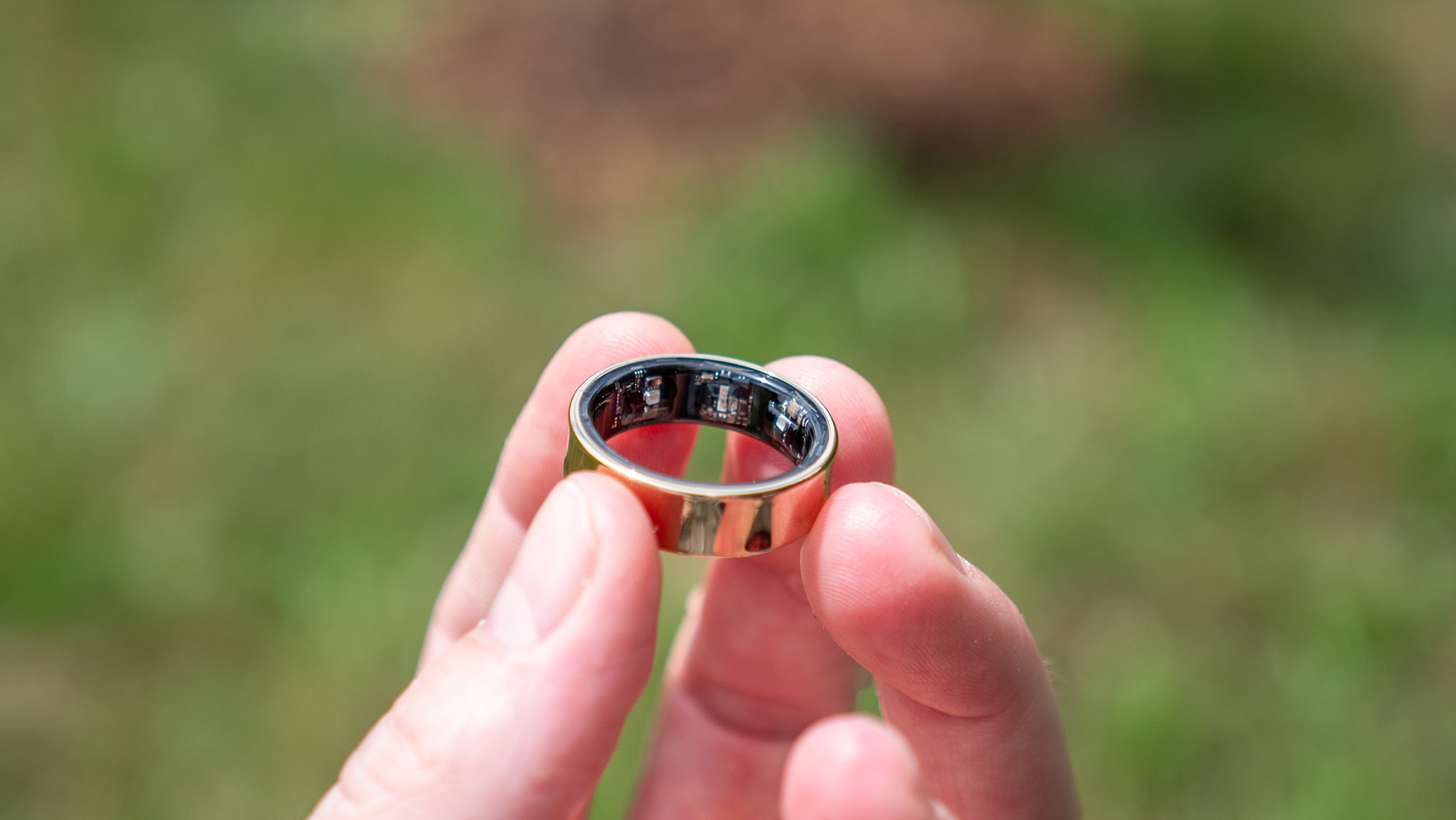
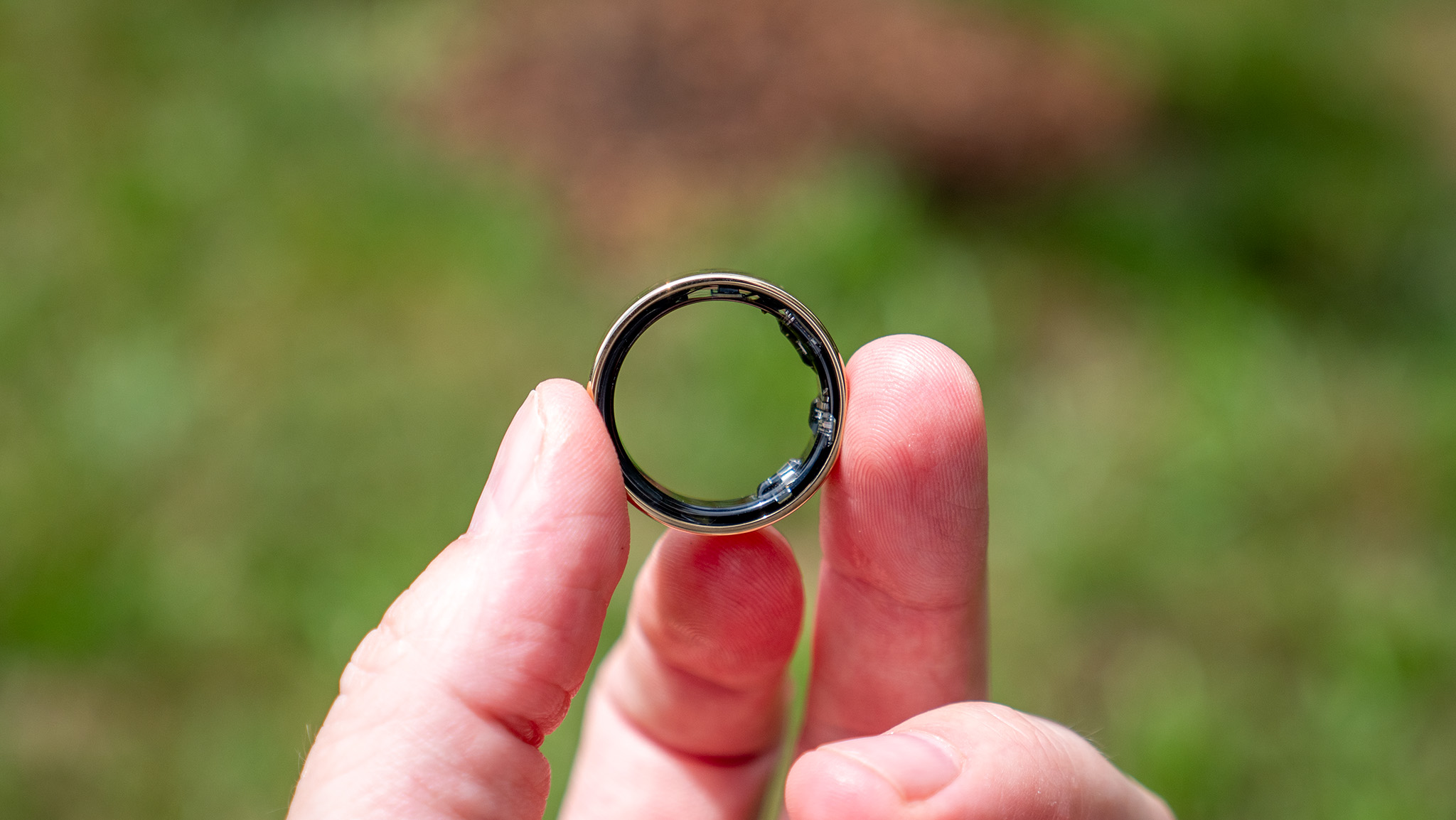
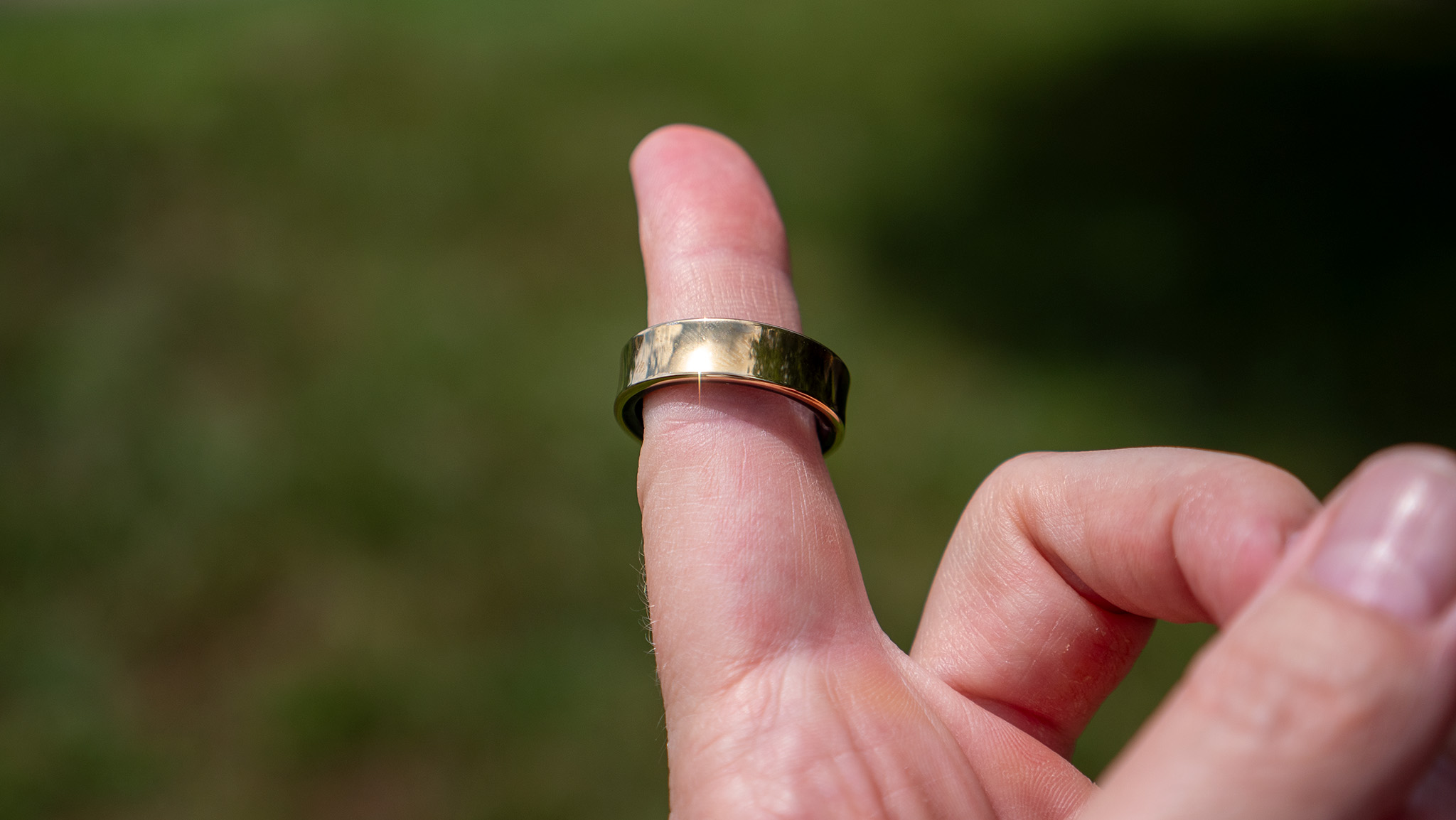

After 5 weeks of use, the ring looks like it's seen 20 years of wear and tear.
The Galaxy Ring features a concave design that helps make the ring look thinner than it actually is, and the titanium construction is impressively light but I'm not fully convinced of its durability. The concave design helps keep the center from getting scratched but it doesn't do so much for the edges.
After 5 weeks of use, the ring looks like it's seen 20 years of wear and tear. My 16-year-old gold wedding band looks in far better shape, for reference.
I ran a Spartan Race with the ring in early August because I wanted to see how it held up during an event that mostly consisted of running and walking with obstacles thrown in every few hundred meters. The result was less than excellent on all counts—which I'll detail further in the health tracking section below.
The biggest issue here isn't the questionable durability. It's the fact that smart rings aren't repairable.

On the underside, you'll find an orientation indicator letting you know how to wear the ring. This line should always line up with the middle of the underside of your finger as it ensures the Ring's sensors are in the most optimal place. I would regularly check to make sure this indicator was in the right place and found it usually needed a few rotational fixes throughout the day.
The Ring fit nicely on the middle finger of my right hand where I found that particular finger shape to be better for wearing a ring than my index finger. It's more comfortable, overall, but it also doesn't get in the way like it would when I tried to wear it on my index finger.
Samsung recommends wearing it either on the index or middle fingers if you want to use the gesture feature, so this is right in line with expectations. Gestures are something unique to the Galaxy Ring and an advantage Samsung has over competitors, but they only work when paired with a supported Samsung Galaxy phone.
| Category | Galaxy Ring |
|---|---|
| Dimensions | 7.0mm (width) x 2.6mm (depth) |
| Weight | 2.3-3g |
| Materials | Titanium grade frame |
| Water resistance | 10ATM, IP68 |
| Colors | Titanium Black, Titanium Gold, Titanium Silver |
| Sizes | 5–13 |
| Connectivity | Bluetooth LE 5.4 |
| Sensors | Accelerometer, PPG, skin temperature |
| Battery | 18mAh-23.5mAh, 40% in 30 minutes |
| Charging cradle | 361mAh |
Aside from being exclusive to newer Galaxy phones, it's also worth noting that there are only two main gestures right now: take a photo, and stop an alarm on your phone. To perform either of these actions, you'll double-tap your ring-wearing finger and thumb together in the air as if you're pinching something twice.
While these are cool to use in very specific circumstances, they're not product-selling features by any means.
The Galaxy Ring's two most unique features are gesture support and the ability to remotely find a lost ring, but both only work with certain Samsung Galaxy phones.
Samsung also supports a "find my ring" feature that works identically to other Samsung Galaxy devices. Open the Galaxy Wearables app, then tap find on the main menu. The app will give you a rough location of where the Ring is—or where it was last detected if it's not in your general vicinity—including a handy GPS map using Bluetooth for local location, but this functionality only works on Samsung Galaxy phones.
The Galaxy Ring doesn't vibrate or make noise, which means that it doesn't support notifications. That also means that it's a little difficult to find, especially if it fell between the couch cushions or rolled under something like a fridge or stove.
The app lets you rapidly blink the lights on the Galaxy Ring's sensors but this is only useful at night or in a dark room. The lights simply aren't bright enough to be seen during the day or in any type of bright lighting.

Find my Ring is mostly useless unless you have a Samsung Galaxy phone to pair the Ring with.
As I previously noted, this functionality only works on Samsung Galaxy phones. The Samsung Find app is exclusive to the Galaxy Store. Sideloading the APK doesn't work either as it requires hooks found in Samsung's One UI to work.
Samsung could have made it work with Google's latest Find My Device upgrade — many other Samsung devices do — but it woke up and chose violence. The best you'll be able to do with a non-Samsung phone is blink the Ring's lights which, as I pointed out, is mostly useless.
Still, other smart rings don't have a "find my" feature at all, so any way to find your lost Ring is an advantage for Samsung, even with its limitations.
Battery and charging

One of the main reasons to choose a smart ring over a smartwatch is battery life. Most of the best smartwatches need to be charged daily, while some fitness-focused options like the Garmin Forerunner 965 can last 1-3 weeks depending on how often you use GPS tracking.
My Galaxy Ring lasted 6-7 full days on any given charge. In the initial review, I noted that the Ring had 10% left at the end of the 6th day, which is plenty to still perform sleep tracking that night.
The remaining battery percentage can be tracked both on the Galaxy Wearables app and with the Ring itself. Just take off the ring and look at the indicator LEDs inside for a few seconds. They'll flash green indicating the battery percentage left in 25% increments. Four flashes mean between 75%-100% battery is left, three flashes for 50%-75%, etc.
When you wear a Galaxy Ring and a Galaxy Watch at the same time, the Ring's health sensors go to sleep to save battery life. To me, this makes no sense at all. It should be the other way around.
Samsung highlights that a Galaxy Ring and a Galaxy Watch can be used in conjunction for the most accurate health tracking and better overall battery life. But it feels like Samsung got things backwards with the battery portion of this equation.
When you wear a Galaxy Ring and a Galaxy Watch at the same time, the Ring's health sensors go to sleep to save battery life. To me, this makes no sense at all. It should be the other way around since you normally need to charge a smartwatch every day, whereas the Galaxy Ring has week-long battery life with normal use.
Samsung seriously needs to rethink how this works, as it would make a lot more sense to save battery life on the watch by using the Ring's health tracking sensors, instead.

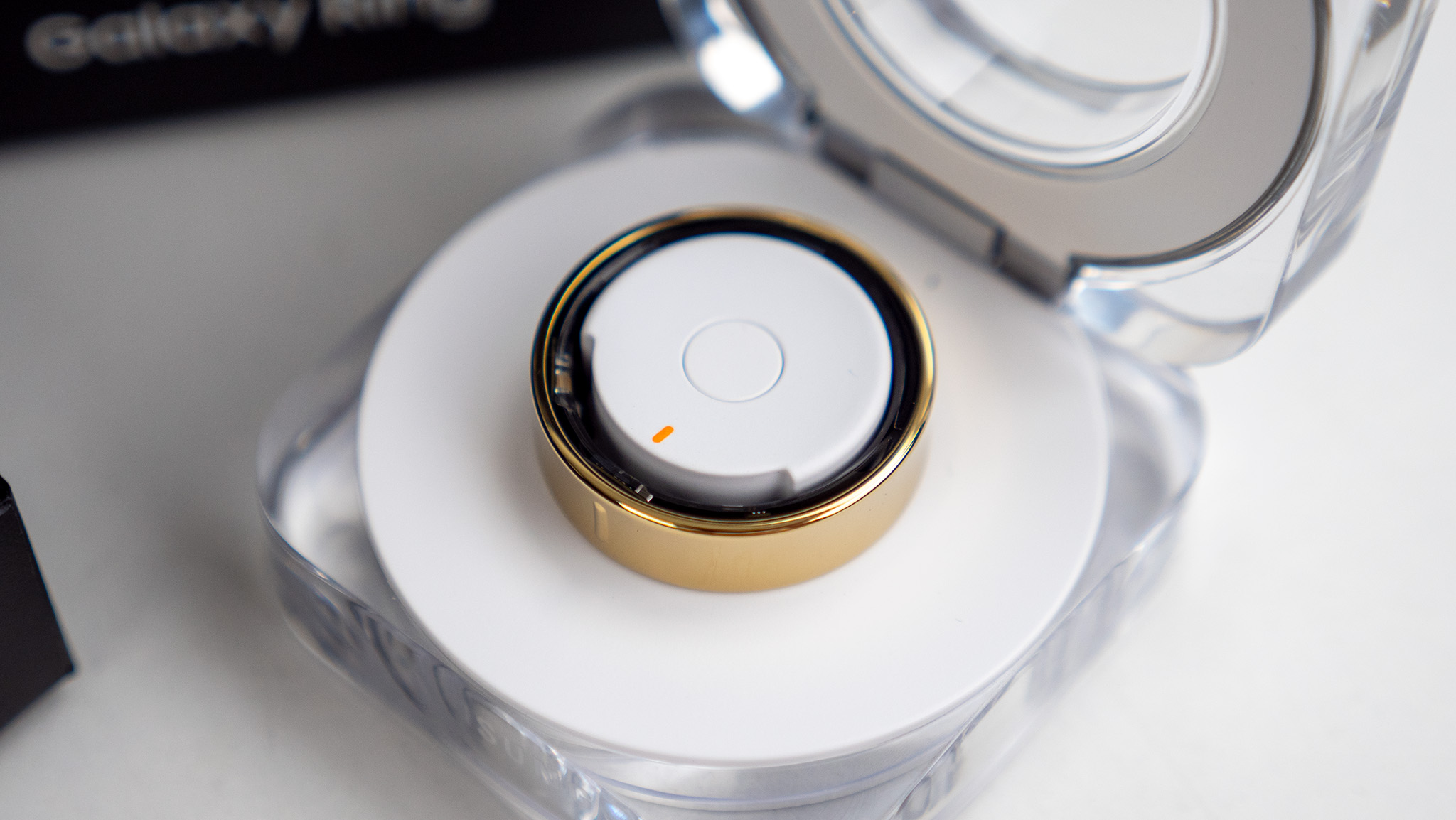
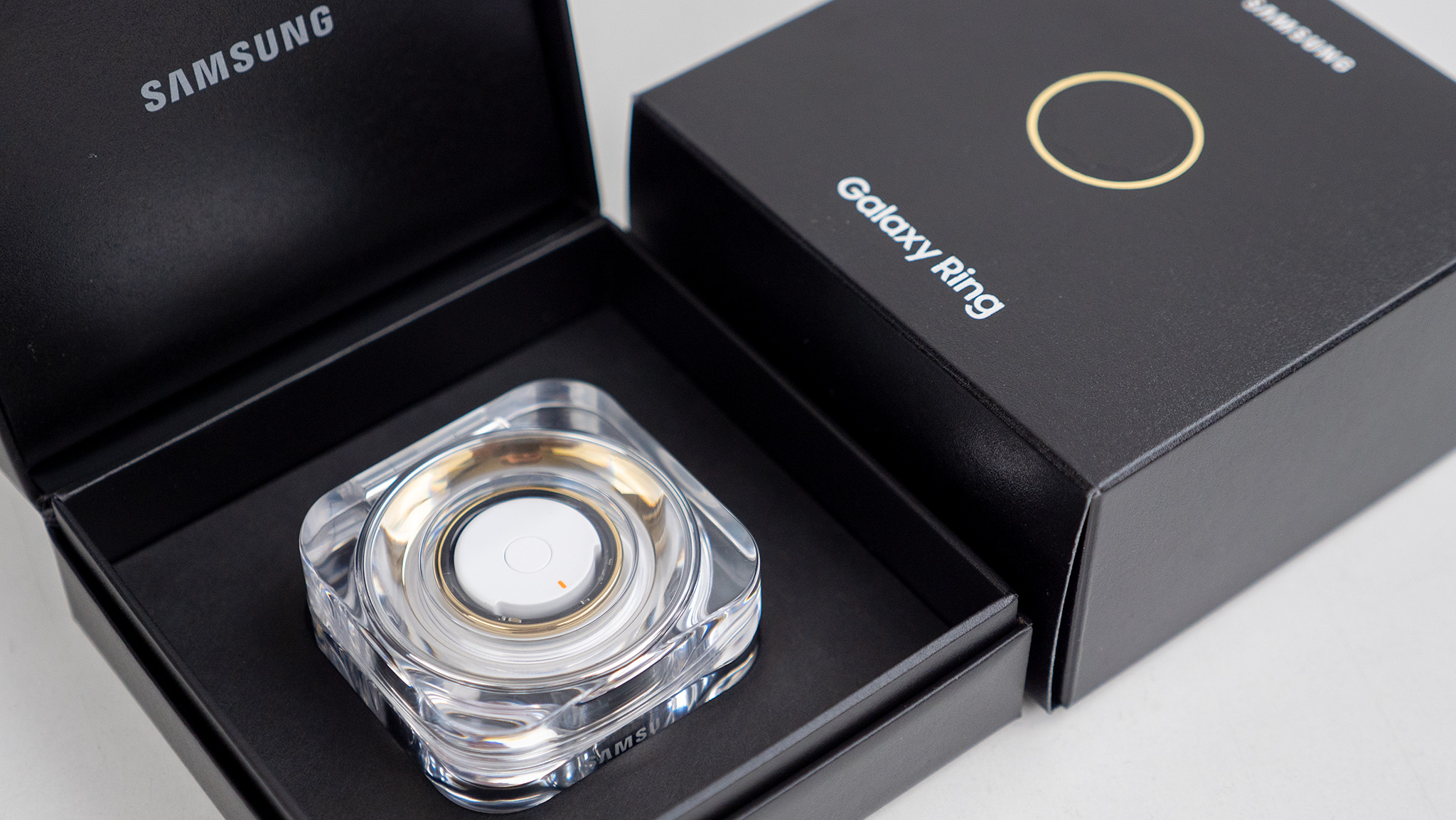
The Galaxy Ring has true week-long battery life, and the included charging case works like a wireless earbuds case for easy travel.
Like the best earbuds, you'll charge your Galaxy Ring using the included charging case. This case has its own battery with enough capacity for several full Ring charges. It also charges via USB-C, so it's convenient to quickly charge and take on the go with you if you need it.
The case itself is a bit tech chic, with a transparent, flashy design including a ring of LEDs that illuminate when opening the hinge. This ring is used to display the case's remaining battery life, and tapping the button can also initiate pairing.
Like many Samsung devices these days, though, charging the Galaxy Ring is abysmally slow. A 30-minute charge resulted in a measly 50% Ring charge, while it took a full hour to top-up the tiny ~20mAh battery. No doubt, Samsung makes the charging so painfully slow in an effort to prolong battery longevity but at least you only need to charge it once per week.
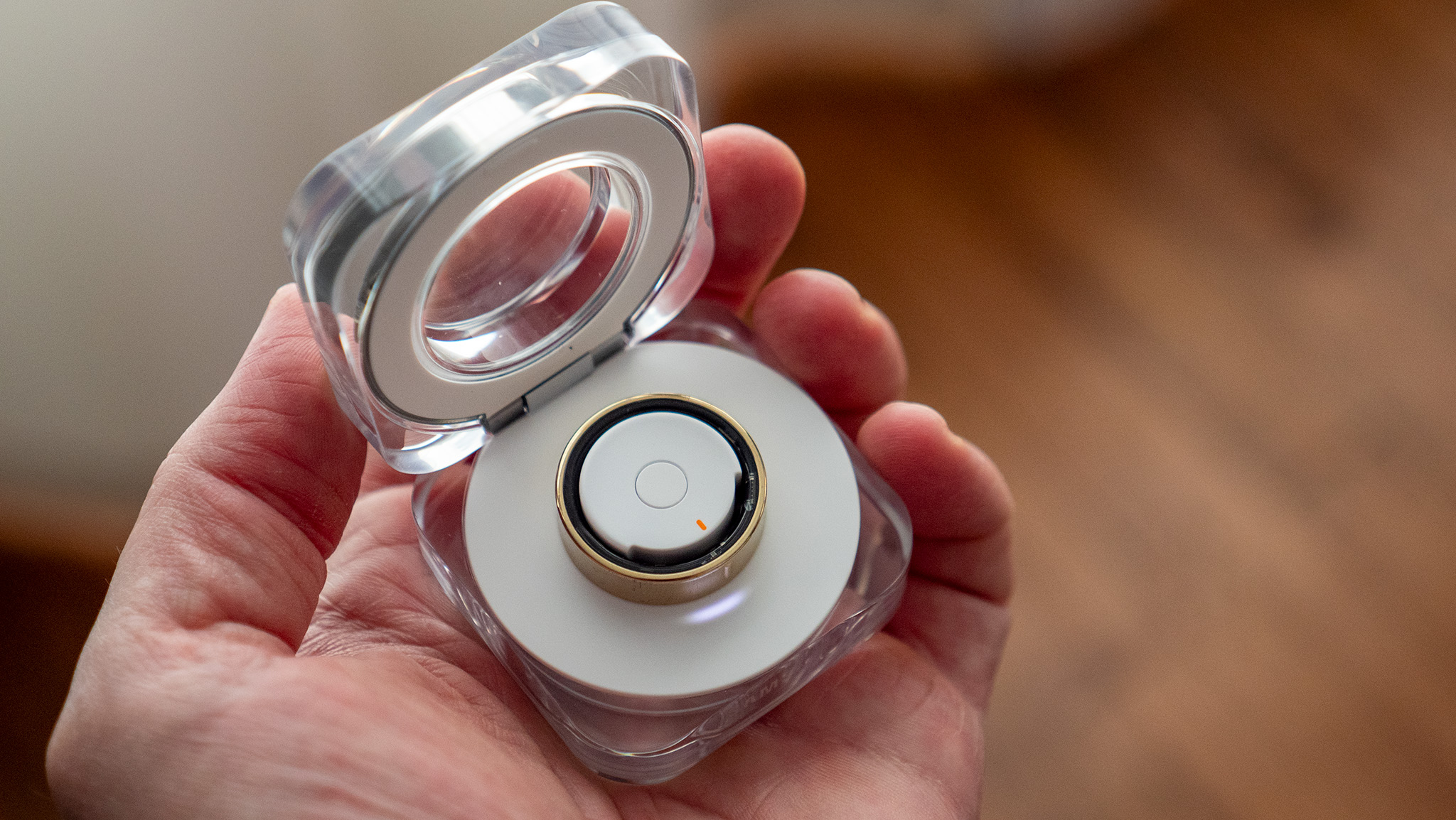
I ran into several situations where the case wouldn't charge the Ring at all, only to find out I had it upside down on the dock, which seems an odd design for a ring.
Not only that, but I ran into several situations where the ring wouldn't charge at all, even when I thought I had properly mounted it in the case. Part of the confusion comes in the case design. When you open it, the LED ring inside lights up to give you a view of the battery percentage of the case itself. But I often mistook this for the Ring's battery percentage since the LED stays illuminated after I dock the ring.
So instead of charging the Ring, I'd come back after an hour or two to find that nothing at all happened. In all events of this happening, flipping the ring over fixed the charging issue. I'm not sure why charging the ring seems to work on one side but you'll need to pay extra close attention to the app to ensure your ring is actually charging in the case, denoted by a normal charging lightning bolt icon in the Galaxy Wearables app.
Sleep tracking

I hate wearing a watch to sleep. It's not something I do outside of the occasional smartwatch review, so the Galaxy Ring seemed like an ideal way to track sleep. It's incredibly comfortable to wear to bed.
If you've worn a Galaxy Watch to sleep before, expect the same kind of metrics from a Galaxy Ring. That, in and of itself, is a triumph. A smaller, more comfortable device that can get the same kinds of readings for sleep data as a Galaxy Watch Ultra is truly a fantastic proposition.
The problem is that Samsung's sleep data isn't considered the best in the industry by any means, and bands like the Whoop 4.0 or smaller smartwatches like the Pixel Watch 2 deliver far more accurate data.
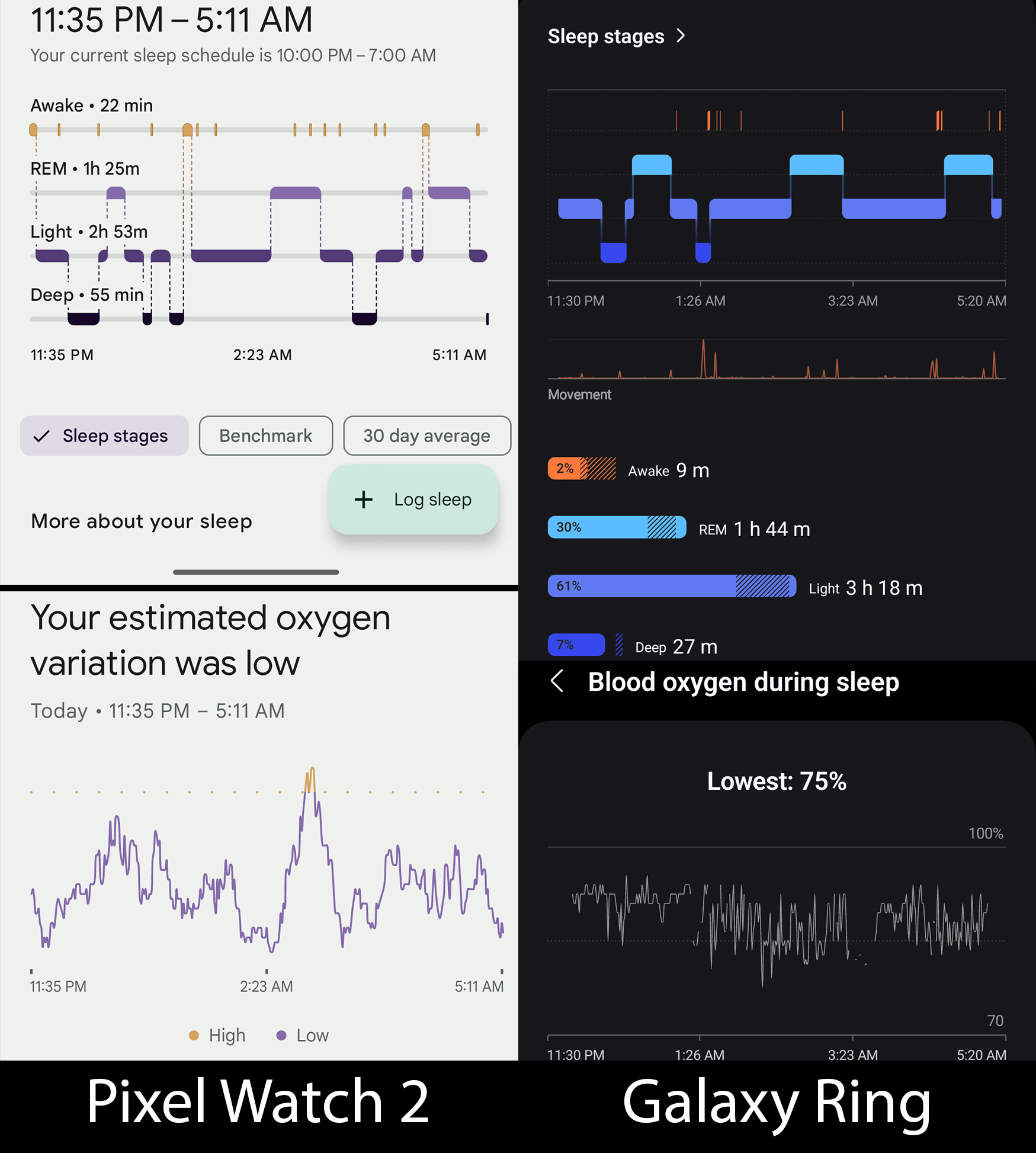

Of course, much of this is going to come down to alignment and fit. Smartwatches need to be worn fairly tightly in order to get an accurate reading. Move around too much at night with a loose wristband and you might as well just delete the tracking data. Likewise, a Ring that spins or wobbles a lot on your finger won't do you much good.
For this reason, I tried to wear the Ring on several different finders but it didn't seem to affect overall accuracy much. It also doesn't support sleep apnea tracking like the RingConn Gen 2, which means any data it delivers is largely pedestrian in nature. In other words, while this is a nice sleep-tracking device, I wouldn't take its results as Gospel.
Sleep tracking was largely inaccurate compared to the best smartwatches, and the Galaxy Ring doesn't support advanced measurements like sleep apnea detection.
The Samsung Health app is chock full of great little details and well-presented information, from the prominent sleep score to the individual metrics and easy-to-read graph that break your sleep down into awake, light, REM, and deep sleep patterns.
Below the sleep score is the breakdown of what metrics fueled the score, including sleep time, physical recovery, restfulness, mental recovery, and sleep cycles. I'm a very light sleeper by nature, and the Ring picked that up handily.
But while I initially felt good about the overall sleep score, diving into the data made me feel less confident in it. I often noticed blips in the graph where no data was collected at all. I assume some of this is down to fit but, like I said previously, I tried wearing it on several different fingers—many of which were an even tighter fit than my middle finger—and still found these weird lapses in data.
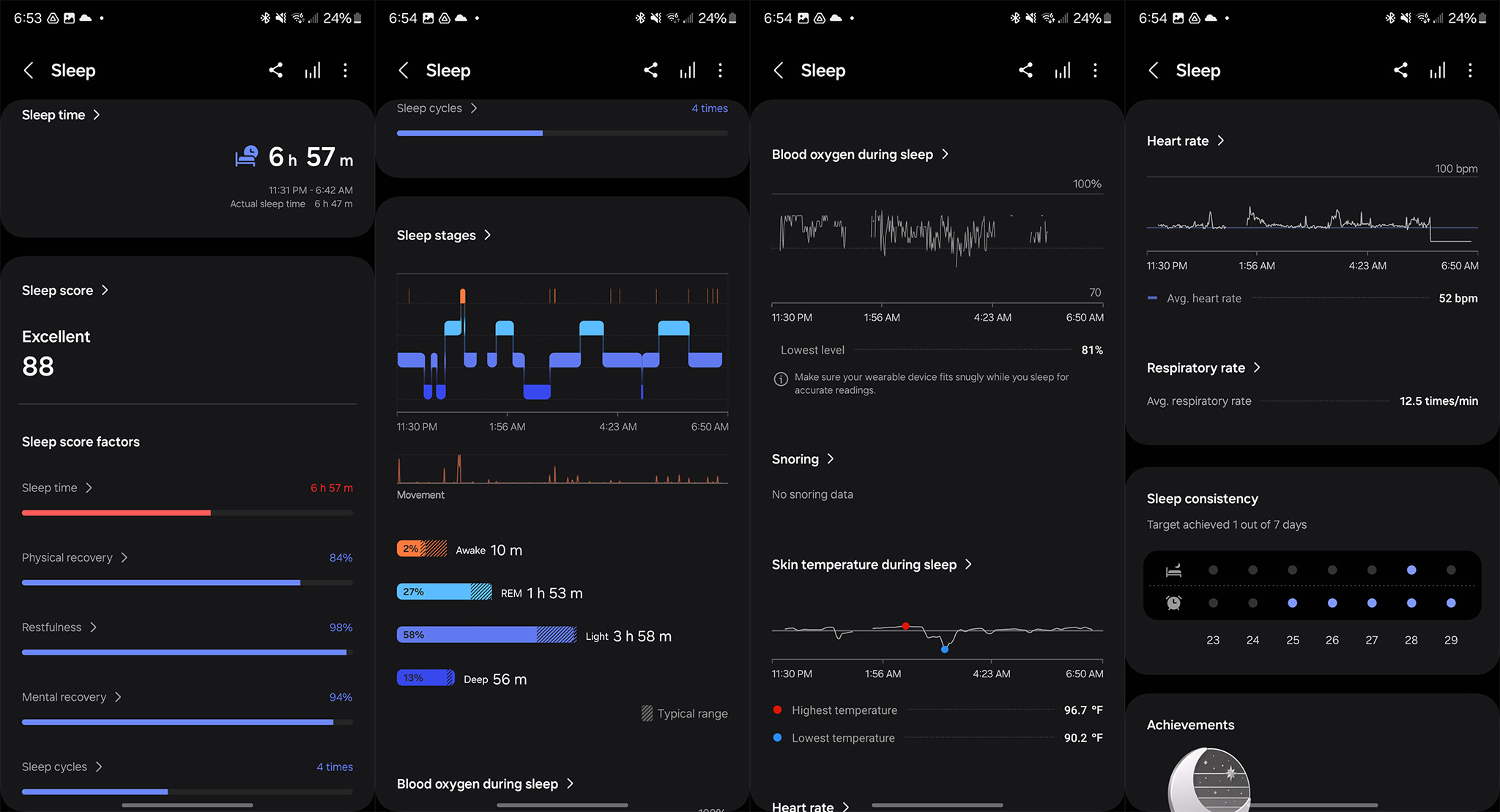
Other data points like blood oxygen and skin temperature while sleeping should also be taken with a grain of salt. Skin temperature readings from a finger will be different from a wrist or even a torso band because of their location — some people like heavy, heat-trapping blankets, while others may put their hands under a pillow, both of which could produce inaccurate readings.
Samsung provides lots of sleep tracking data but I'm not sure I trust its accuracy.
Daily energy score is calculated by combining all the available metrics, but my number was never quite accurate because the Ring never successfully detected any of my workouts at the gym, which you'll read about below. If I were going to plan my day around that energy score number—which is the entire purpose of such a score—it's likely I'd have a less active day than I should.
The Energy Score metric isn't exclusive to Samsung phones, thankfully, but you'll only get the Galaxy AI-powered summary at the top when you pair it with specific Samsung phones.
One YouTuber showed how the Galaxy Ring lines up with other bands and watches, putting it in line with the rest of the Galaxy Watch line and right in the middle of most other sleep and fitness-tracking wearables. In short, it's not bad, but it's not great, either.
Fitness tracking
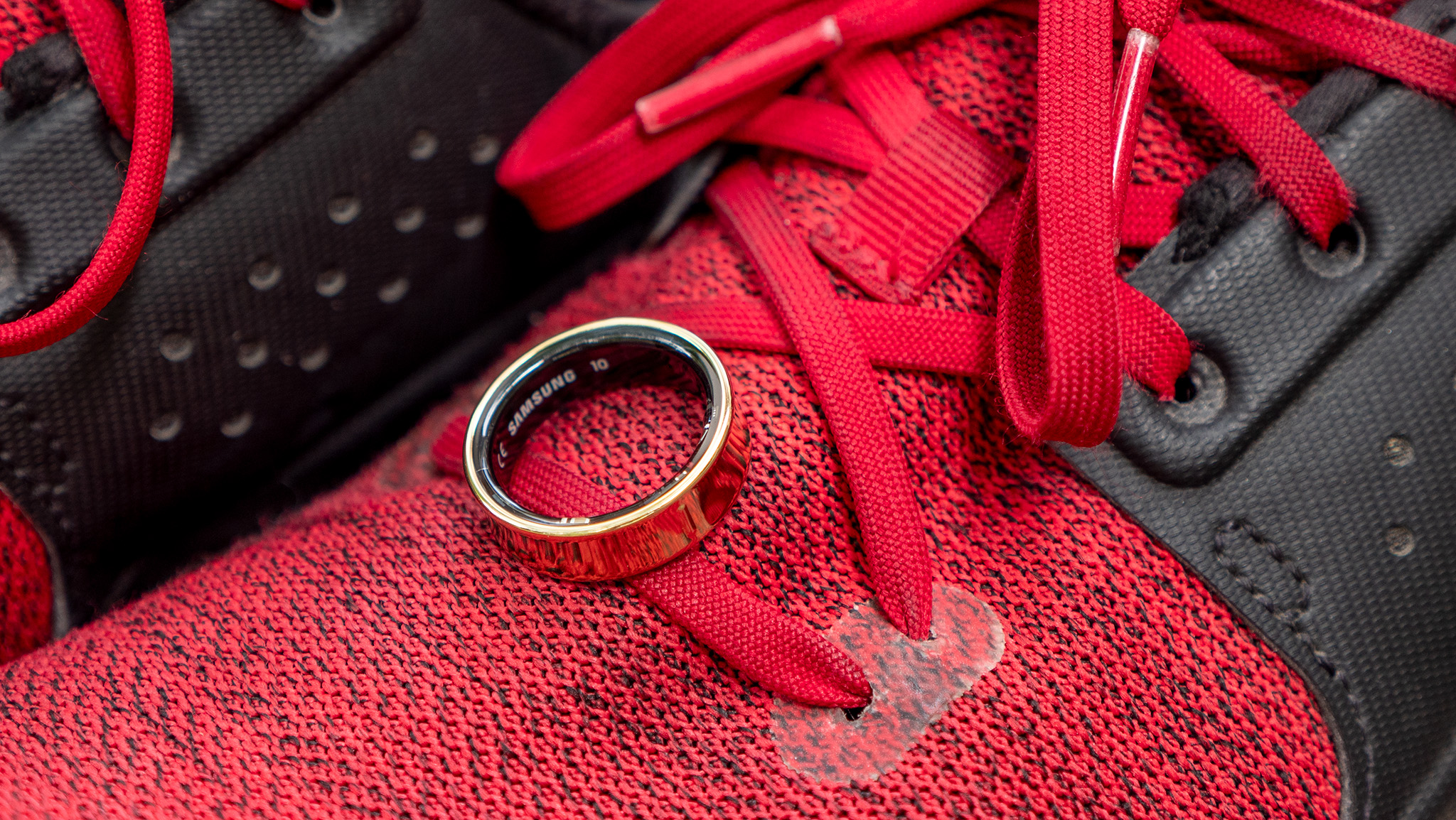
My biggest disappointment with the Galaxy Ring revolves around fitness tracking. I never expected this to replace a smartwatch because of the lack of a screen—I primarily wear a smartwatch while working out to monitor my heart rate—but Samsung's software is seriously lacking some necessary fitness tracking requirements and it makes it nearly useless at a gym.
If your workouts involve more than just walking or running, don't even bother using the Galaxy Ring.
While going on a neighborhood walk or a hike, heart rate tracking seemed to be accurate compared to my Pixel Watch 2. I was pleasantly surprised at how effortless and transparent tracking was. I also found that the Galaxy Ring was dead-on accurate when using it to track steps, which isn't something I can say about the Pixel Watch 2.
First off, if you're not a runner or don't plan to use the Ring to track a walk or a hike, don't bother getting one. Automatic workouts are only supported for walking or running, and even then, I found that automatic tracking only seemed to work when I walked or ran outside. Even then, shorter 400m runs at the gym—including outdoor runs—were rarely automatically detected.
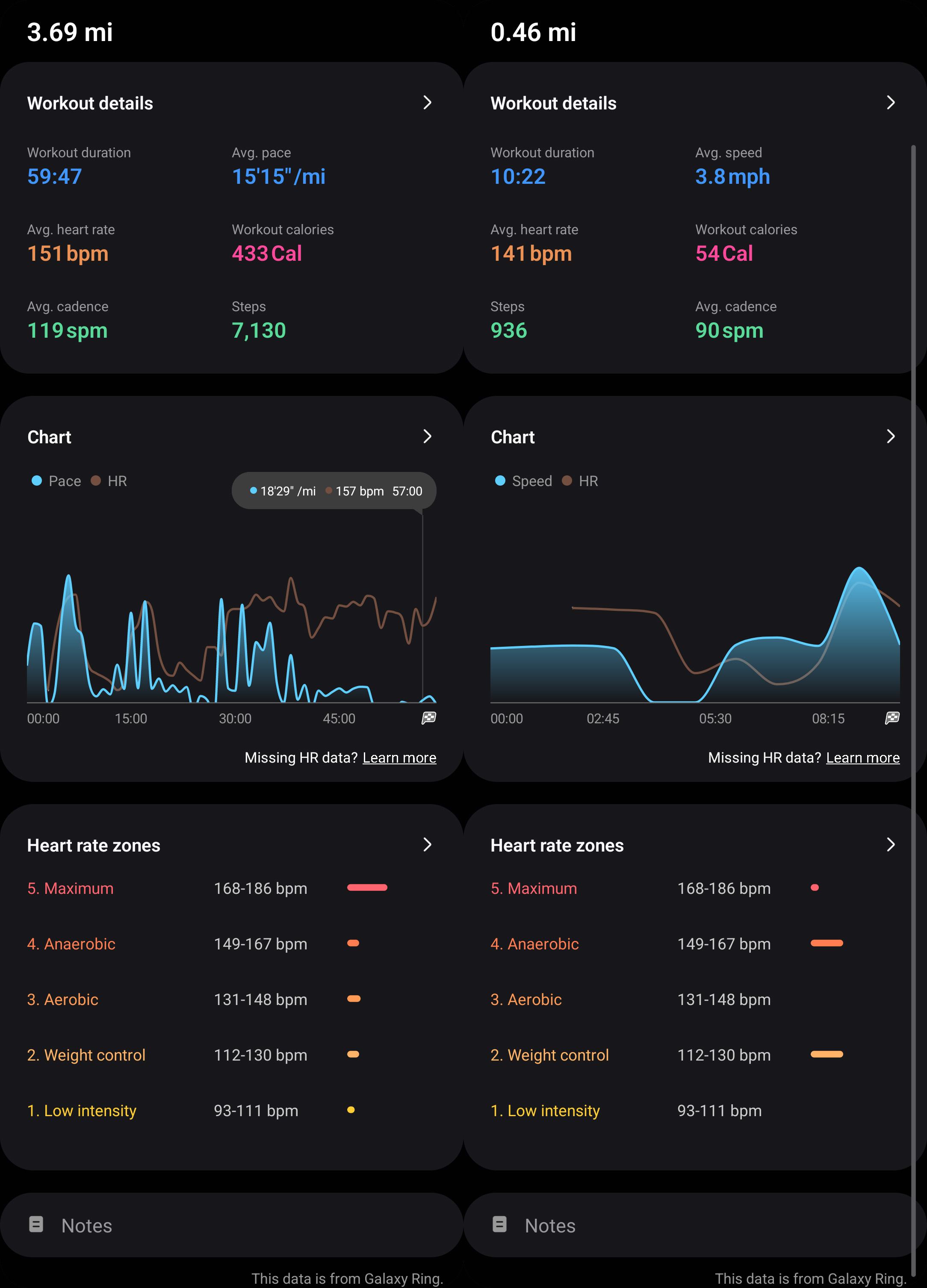
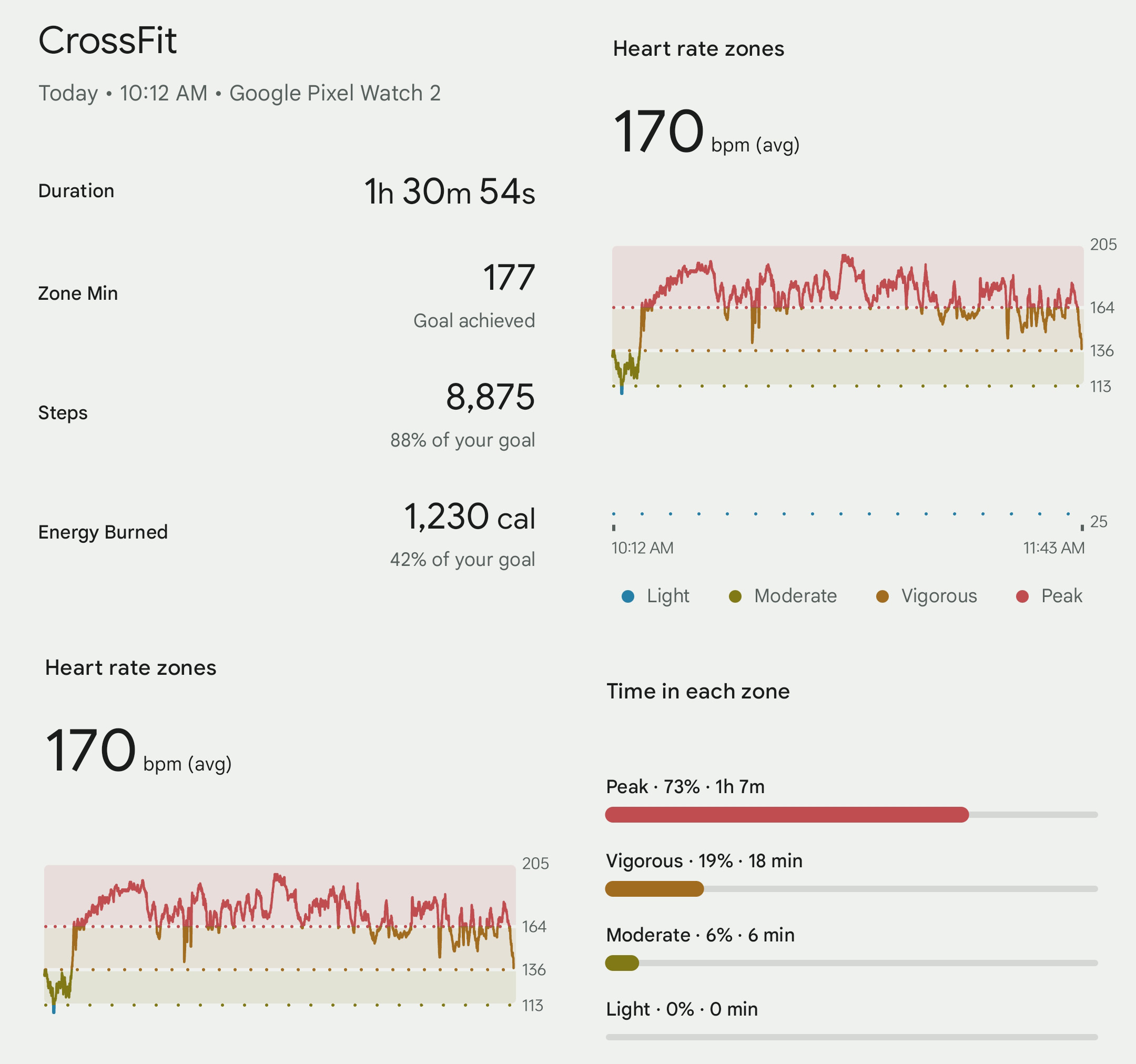
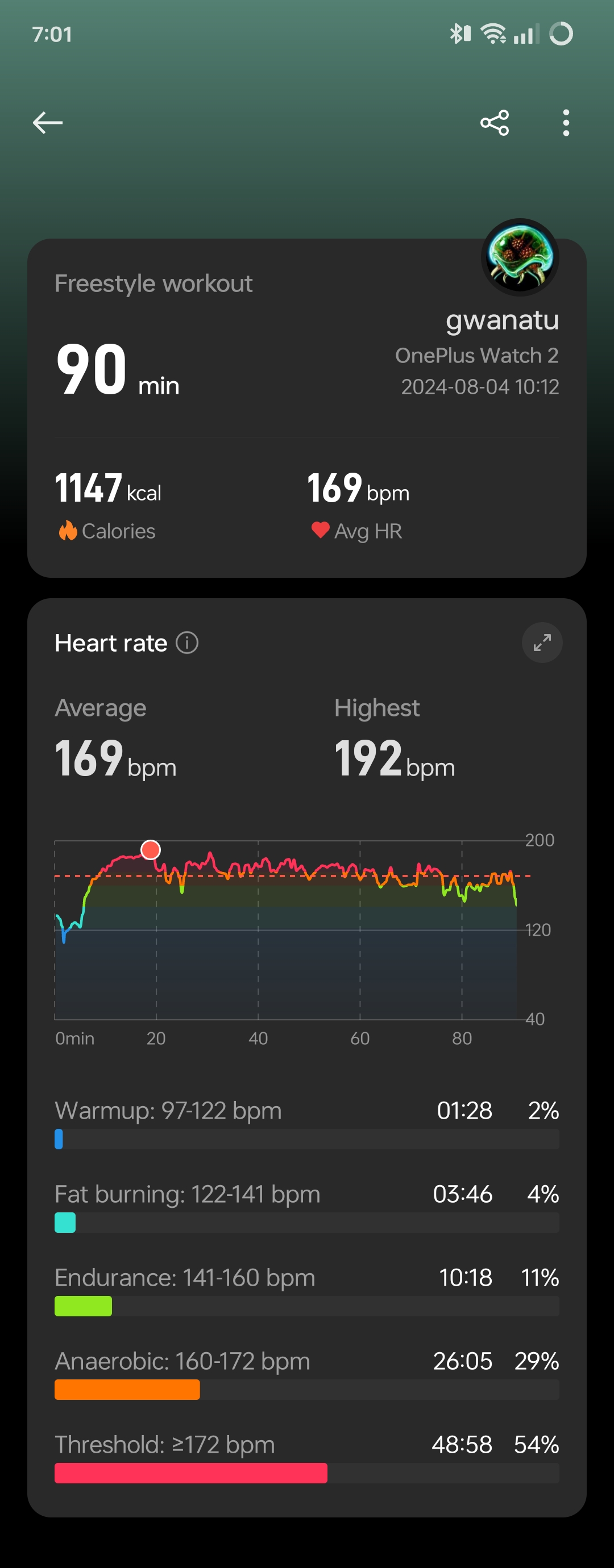

During a Spartan Race, the time, distance, and tracked heart rate were all wrong on the Galaxy Ring.
Let's look at the results from my Spartan Race above. Since there's no way to manually track with a Galaxy Ring, I only have whatever it automatically tracked. During the race, I wore the Samsung Galaxy Ring and Google Pixel Watch 2 on my right hand, while the OnePlus Watch 2 was on my left hand.
The first problem with the Galaxy Ring is the activity time tracked. My actual race time was one hour 22 minutes. Both watches tracked for an hour and a half because I manually started them before the race started while I was waiting at the starting line, but the Galaxy Ring's automatic tracking comes 13 minutes short of my actual movement time.
The second problem is the distance logged. This Spartan Race was the 5k version which equates to 3.1 miles. The Galaxy Ring thought I ran 4.15 miles.
Third is the quality of the data itself. Since the Ring didn't properly track the entire race, the graph technically gets cut off roughly 4/5ths of the way through, but we can at least compare the rest of it. At first, there appears to be no correlation at all between the Galaxy Ring and the two watches, however, a closer inspection shows come similarities.
But even with similar peaks and lows, the numbers from the Galaxy Ring aren't even close to the two watches I wore.


Part of the problem is the polling rate. Heart rate data is only recorded every ten minutes — to save battery — and this doesn't seem to be often enough to detect a workout successfully. Samsung uses other sensors inside to help with detection but they didn't seem to do much good for me.
I go to the gym an average of four times per week—each visit is an hour-long workout at a CrossFit-style gym—but all I saw from the Ring was a blip or two on the heart rate graph showing an elevated number. That was during the best of times. At the worst of times, the Ring didn't grab any heart rate data during my workouts at all.
There's also no way to manually start a workout, which was unbelievable to me.
The Galaxy Ring is not a good workout tracking device, but it sure counts steps incredibly accurately.
When I asked Samsung about this, I was told that starting a manual workout from the Samsung Health app should solve my problems. Unfortunately, this didn't work. Any manual workout started from the Samsung Health app never recorded any Ring data. All I got was a generic calorie burn value relative to the workout I chose and the length of the workout.
In other words, I might as well have not even bothered bringing the Galaxy Ring to the gym.
Other smart rings like the Oura Ring Gen 3 do automatic workout detection far better and will regularly detect a workout, then allow you to select its type after the workout was completed. No smart ring is a proper smartwatch replacement for gym-style workouts but Samsung could have done a lot better with the Galaxy Ring's workout tracking functionality.
All in all, I'm not inclined to recommend this Ring as a serious fitness-tracking tool.
Competition
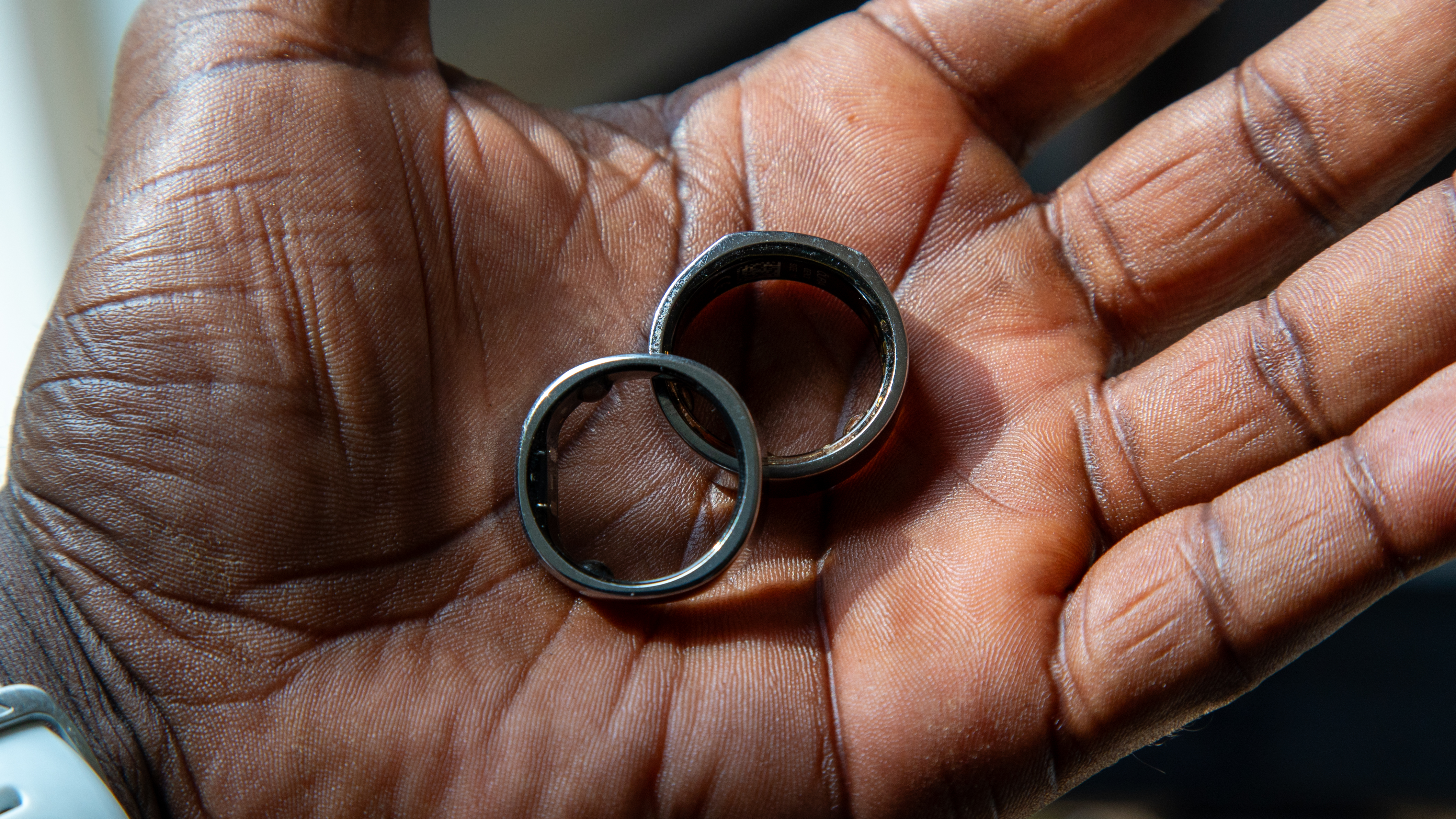
The Ultrahuman Ring Air is a better overall buy than the Galaxy Ring. It's $50 less than the Galaxy Ring and, unlike Oura, has no subscription cost. Our Wearables reviewer Michael Hicks found the sleep tracking data to be quite accurate — unlike my experience with the Galaxy Ring. It even has AFib detection, something that's vitally important in a 24/7 wearable. The downside is that active fitness tracking isn't any better than the Galaxy Ring.
Another excellent alternative is the RingConn Smart Ring Gen 2, which weighs in at $299 and features a unique squircle design. Battery life is 3-4 days longer than the Galaxy Ring, it offers sleep apnea detection, and RingConn offers covers for its rings which can prevent damage while using it during workouts or other times you may be worried about it getting scuffed up. It doesn't give you a "readiness score" like some other rings but I found those kinds of scores to be largely useless, anyway.
Of course, no smart ring review would be complete without mentioning the Oura Ring Gen 3, a ring that feels like a better overall buy for folks who are more serious about fitness tracking with a smart ring. Oura's software does a better job of automatically detecting workouts and gives you far more options for categorization and tracking than Samsung. The big downside is that you'll need a $6/month subscription to access that data.
Should you buy it?
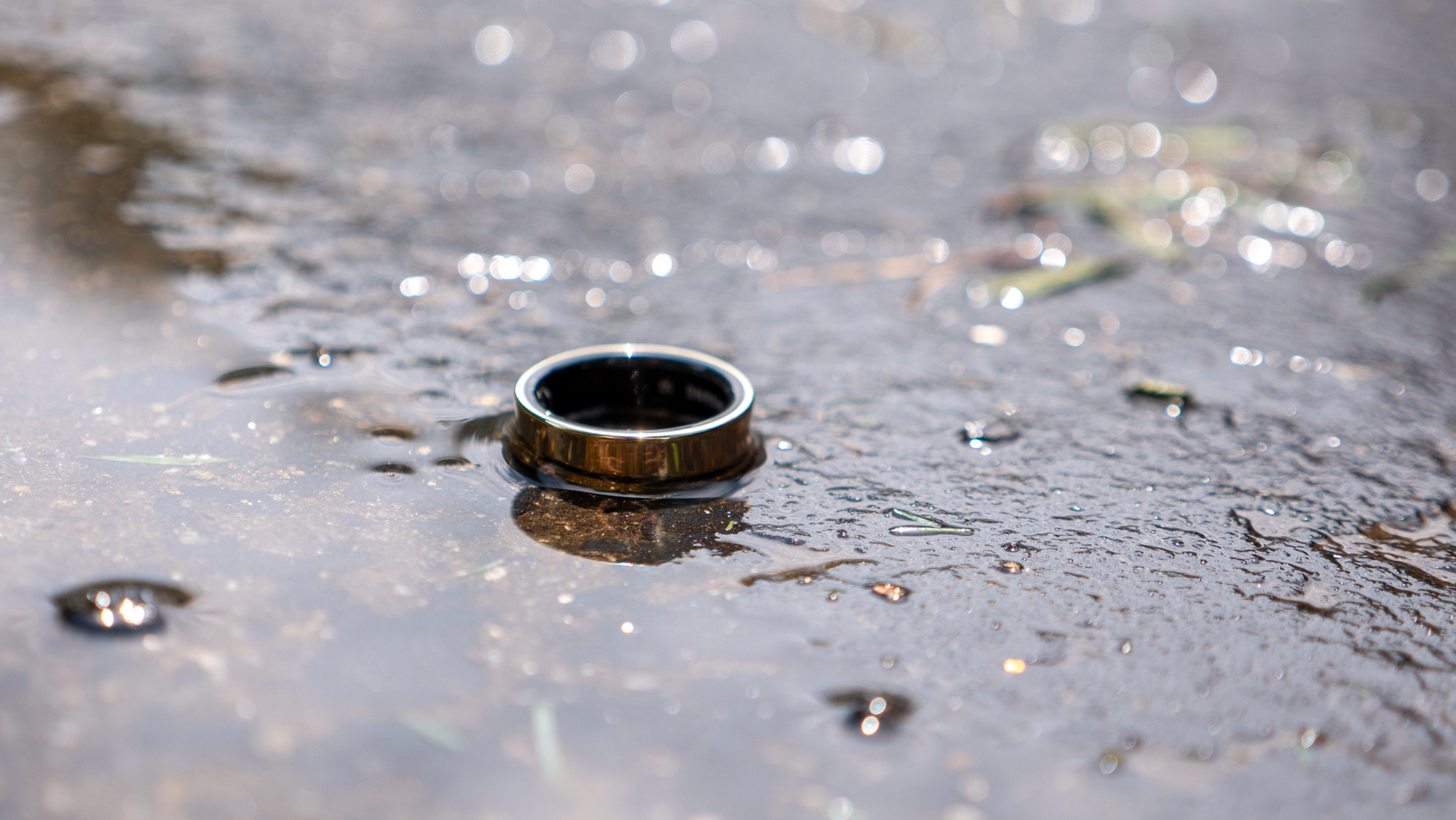
You should buy it if...
- You want a nice-looking ring that does more than look pretty.
- You want a smart ring without the expensive subscription.
- Casual 24/7 health tracking is more important to you than focused fitness or sleep tracking.
You shouldn't buy it if...
- You want a serious fitness-tracking device.
- Your workouts involve more than just walking or running.
- You're trying to replace a smartwatch with a smart ring.
On the surface, the Samsung Galaxy Ring looks like a fantastic first-generation effort. It provides lots of data and features without a monthly subscription requirement. The hardware is sleek, and it's comfortable to wear all day, which is especially important for sleep tracking and automatic exercise detection.
But the health tracking features feel amateur by nearly every measure. Automatic workout tracking is limited in scope to just walking or running and, even then, only works well when doing these activities for long periods and outdoors. Sleep tracking is comfortable but not nearly as accurate as a good smartwatch. Some data is even restricted to users who pair the ring with a Galaxy phone that has Galaxy AI built-in.
While the hardware is stellar, the fitness tracking experience simply isn't ready for primetime. The amount of data you get is superb, but the quality of that data is questionable. Technology enthusiasts will likely be thrilled with the tech packed in the ring, but anyone serious about quality fitness or sleep tracking should look elsewhere.
Smart rings are the ideal form factor, but Samsung's overall execution leaves a lot to be desired. Even as a 24/7 health tracker, other rings do it better because the Galaxy Ring is missing features like AFib or sleep apnea detection. If I had spent $400 of my own money on this ring, I would have returned it already.
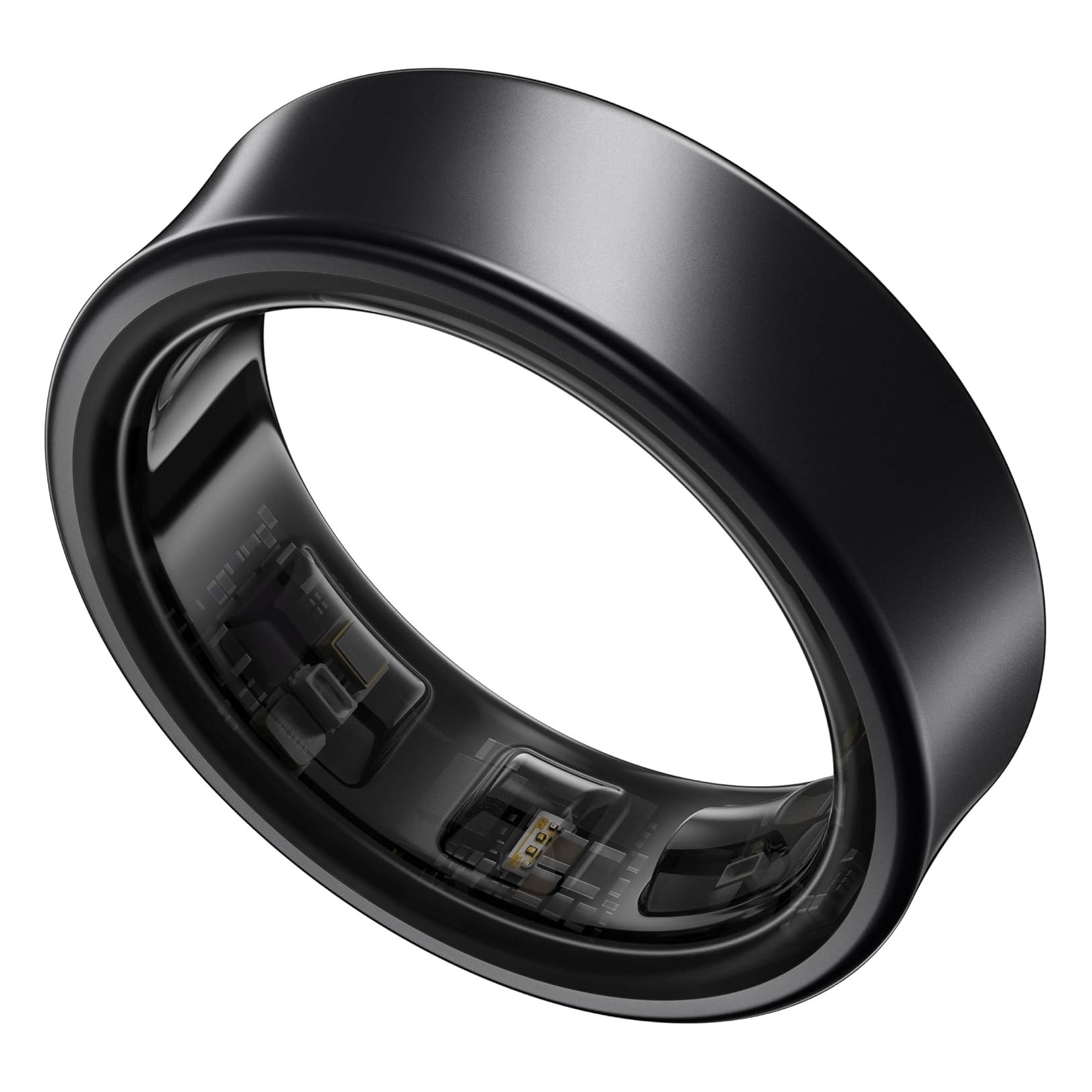
Samsung's latest wearable
Samsung knocked it out of the park with a gorgeous hardware design that features tons of sensors, a week-long battery life, and a brilliant charging case. Samsung Health is a powerful app but it's only best when paired with a Galaxy phone and, even then, only great for folks who need casual fitness tracking.

You must confirm your public display name before commenting
Please logout and then login again, you will then be prompted to enter your display name.
